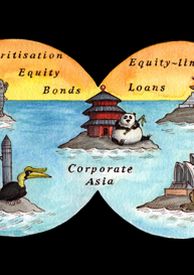Cautious optimism but no sure thing
Asia’s economic outlook is a story of cautious optimism. All the signs are good, but the process of withdrawing stimulus and avoiding asset bubbles without derailing the recovery, will be delicate.

This year should be the one in which the key questions about whether the financial crisis is over and whether the recovery is sustainable are answered. The general mood is one of cautious optimism but there are fears about what will happen when government stimulus packages are withdrawn and interest rates start rising in earnest. It is clear that Asia has had a good crisis and, as always, the Chinese and Indian economies have led the way. The countries with the most exposure to them, like Australia, have done well too. More widely, Asian...Read more
To purchase printed copies or a PDF of this report, please email leonie.welss@lseg.com and shahid.hamid@lseg.com
Asia’s economic outlook is a story of cautious optimism. All the signs are good, but the process of withdrawing stimulus and avoiding asset bubbles without derailing the recovery, will be delicate.
A key dynamic that market participants in Asian debt markets will have their eyes on in 2010 will be the relative abilities of the G3 versus the domestic market to absorb paper in size and tenor. Heightened risk aversion should US equities sell off would probably provide a rerun of early 2009 when G3 issuance gave way to local markets.
About a year ago, loan bankers in Asia were bracing for a slowdown in the aftermath of the global financial crisis that put a high price on liquidity. It was a forgettable 12 months and although most banks met their budgets, they will be happy to put the year behind them. If activity in the first month is anything to go by, 2010 promises to be better.
Asia Pacific equity issuance should remain healthy this year and large IPOs are expected to feature more prominently than last year. China and India will continue to dominate but choppy markets will force issuers to be more realistic about valuations if they want their deals to succeed.
Few parts of the world’s financial markets were harder hit than securitisation in the global financial crisis. Across the world, deals dried up. The practice of pooling of securities into single instruments received much of the blame for starting and exacerbating the crisis, and even as investors returned to debt instruments, they tended to steer clear of anything complicated.